Can I Perform Ductless Mini-Split Maintenance Myself?
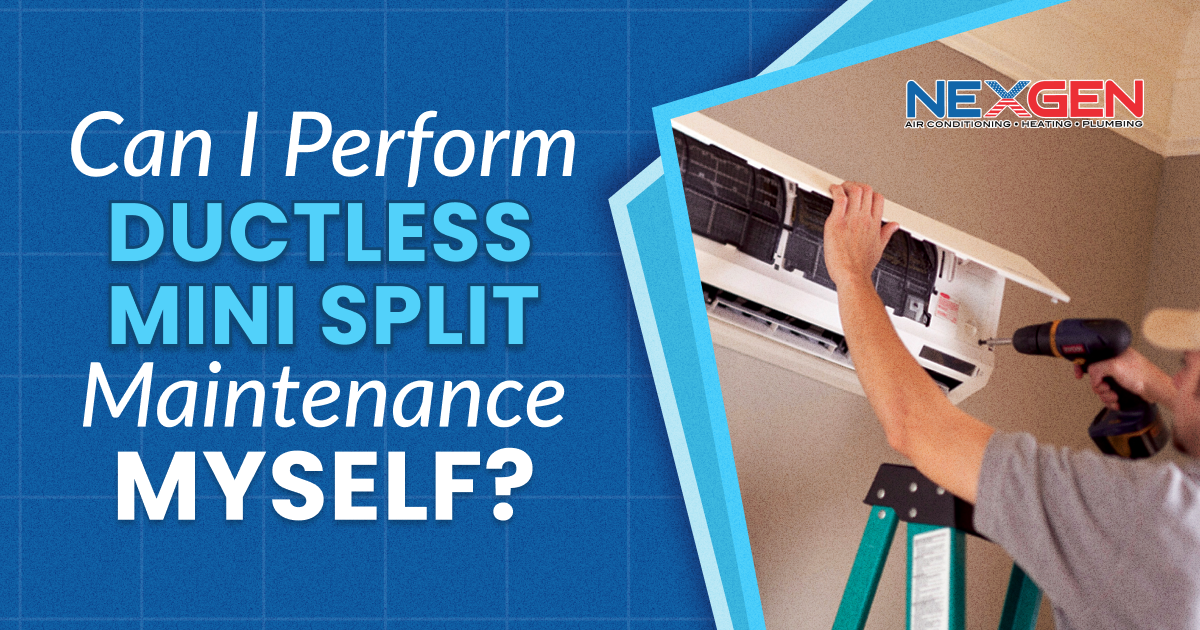
There are some types of ductless mini-split maintenance you can do yourself. While we recommend professional service twice a year to check electrical connections and for refrigerant leaks, drain hose blockages, faulty run capacitors, etc., we also encourage you to clean the system often. Here are some beneficial DIY maintenance tips to keep your ductless mini-split in top shape.
Clean or Change the Air Filters
Each indoor air handler has a filter. Depending on the model, the filter must be replaced or can be cleaned with a dry cloth before being re-inserted. Check the owner’s manual for the recommended interval and other instructions related to the model, but if your home is dusty or you have pets, check the filter more often. Otherwise, dust and dirt can build up in the system, causing it to work less efficiently and possibly leading to damage and a shortened lifespan.
Clean the Outside of Each Unit
If dust and dirt collect on the exterior of an air handler, particles can get inside and interfere with internal components. Dust the unit weekly to avoid any problems. This only requires a damp cloth and a gentle cleaning solution. Also, make sure the exterior of each vent is free from dust and dirt that can cause a clog.
Keep the Condenser Coils Clean
The condenser coils in the outdoor unit remove heat from the refrigerant. But if they’re dirty, heat transfer can be impeded and the system won’t work properly. Follow the care instructions in the owner’s manual to clean the coils. Generally, condenser coils can be sprayed clean with a garden hose, while the remaining debris can be removed with an AC coil cleaning brush. Also, check the blower assembly and fan wheel for dirt, and clean them as necessary. Just remember to turn the unit off before you get started.
Make Sure the System’s Pipes Are Clear
Dust and debris can block the drainage pipes between the indoor and outdoor units. The system will then struggle to maintain a comfortable temperature. To avoid trouble, clean the pipes by vacuuming the dirt out or clearing it with a brush. Call a professional if the clog is deep or you’re unable to clear the line.
Clear the Area Around Each Unit
Make sure no furnishings, objects, or clutter are blocking the ductless mini-split unit. If there’s not enough space around it, airflow can be restricted and dust can accumulate in the system. Ideally, large furniture, bookcases, and artwork should be kept at least four feet away from the unit.
Protect the Outdoor Unit in Winter
Snow, ice, and debris from trees can prevent the outdoor unit from running normally. Check it often during the colder months. Gently remove any snow and ice you find. Otherwise, it can cause serious damage that is expensive to repair. To prevent issues, mount the condenser unit above grade and place a protective plywood cover on top to avoid contact between the equipment and debris or moisture.
Schedule Ductless Mini-Split Maintenance with NexGen
Your mini-split system provides heating and cooling, so it should be inspected and cleaned by a professional twice a year. At NexGen, our licensed HVAC technicians will ensure your system gets the care it needs. Routine service and repair discounts are included in our maintenance plan. Continue reading to learn more about maintaining your ductless mini-split system; to schedule service, call (805) 301-6788 today.
How Does a Split AC Work In a Larger House?
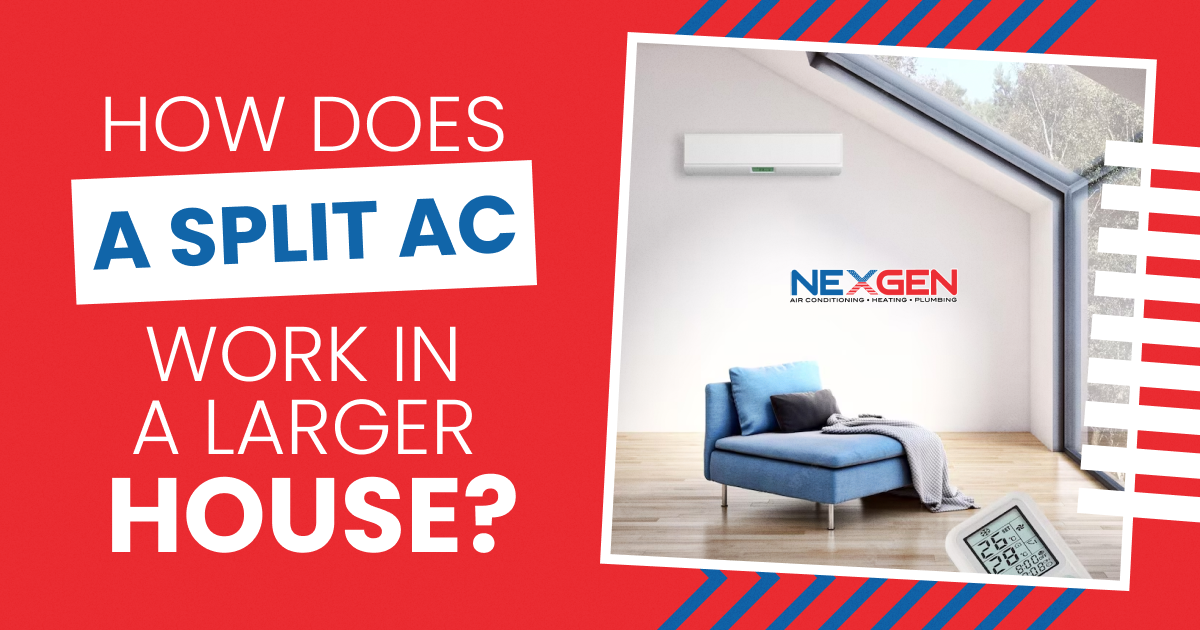
NexGen is known for high-quality air conditioning services in Southern California. Our licensed and insured technicians can install any type of system, including a ductless mini-split AC. Mini-split systems are often recommended for smaller homes, older properties, and those where it’s more difficult to install ductwork. Highly versatile and flexible, they can also accommodate a larger home. If you’re wondering, “How does a split AC work for a larger house?”, we’ll look at what you need to consider when setting one up.
How Does a Mini-Split AC Work?
Split ACs, whether single- or multi-zone, have one outdoor compressor/condenser unit. Depending on the system’s type and configuration, the outdoor unit can be connected by refrigerant tubing, a power cable, a condensate drain, and suction tubing to one or more indoor air handlers. Each air handler can be controlled individually, so you can set the temperature as you like for one room or area.
How Many Mini-Splits Do I Need?
You can connect up to eight air handler units to a single condenser unit. But whether this is necessary depends on your home. The system can be expanded with additional units if you decide to build a home addition or convert a basement or attic to a living space.
Whether you need a mini-split for every room depends on your needs. For example, you might like a cooler bedroom while other occupants like it warmer in their bedrooms. Or, you might want the living room warmer and the home office cooler.
As you can see, installing a mini-split AC system requires a lot of planning. But you don’t necessarily need an air handler in every room. This can be expensive in a large home. A single “zone” can include multiple rooms or even an entire floor. It just needs proper airflow to provide sufficient cooling or heating.
Mini-Split AC Size vs. Square Footage
Installing a system that’s the right size is key to how a split AC works in a larger home. A mini-split system’s size is determined by its capacity in British Thermal Units (BTUs). A BTU is a measure of how much energy it uses to remove heat. Here are some examples of room sizes and the capacity required for them:
- 150 to 200 Ft2: 6,000 BTUs
- 300 to 350 Ft2: 8,000 BTUs
- 400 to 500 Ft2: 12,000 BTUs
- 600 to 700 Ft2: 18,000 BTUs
- 1,200 to 1,500 Ft2: 36,000 BTUs¹
Consider Distances
The indoor units and condenser are connected by a conduit, which requires a 3-inch hole in an exterior wall. If you spread a mini-split AC system over multiple rooms and floors, the distance between the farthest head units and the outdoor unit affects how far the refrigerant must travel. The longer this distance, the less efficient the system can be due to friction, the energy required to pump the coolant, and heat transfer between the lines and ambient air (insulating the lines can minimize heat loss).
Depending on the make and model, refrigerant lines can extend 66 to 98 feet from the outdoor unit. This works for most houses. But if you require head units installed at longer distances, or exceed the number of units a condenser can handle, another outdoor unit can be added.
Call NexGen Today
“How does a split AC work in a larger house?” is a question we can easily answer. The experienced technicians at NexGen will explain the process and evaluate the needs of your home. Configuring different zones allows you to set the temperature perfectly for each room. To learn more about ductless heating and cooling systems, schedule a consultation, and learn about options and financing, call 833-729-9735 today.
Source:
Daikin: The Best Ductless AC Unit
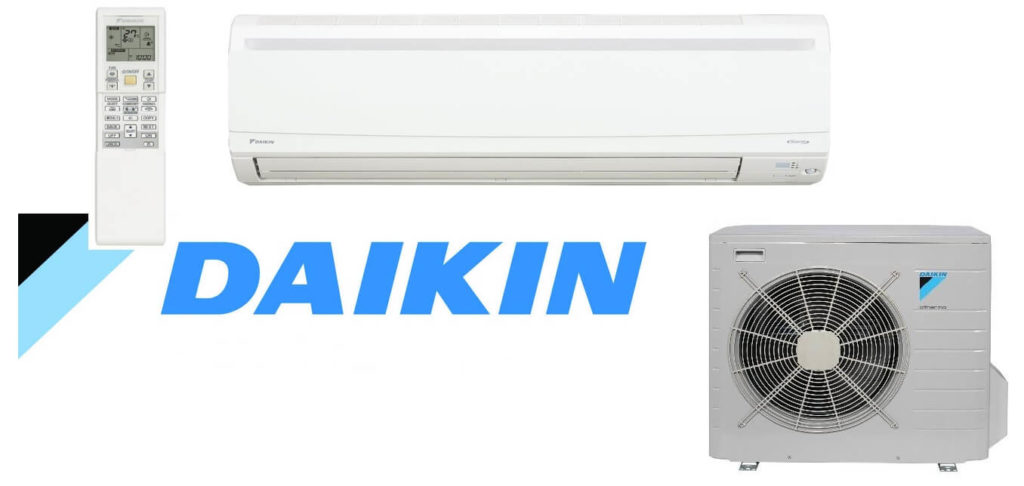
Mini splits are a relative newcomer to the North American HVAC market, however they are quickly rising to the top as consumers realize what can be offered with these units. In particular Daikin is causing a lot of the buzz and for good reason.
SEER Rating
In what has become a cutthroat competition for who can make units with the highest SEER rating for the lowest cost Daikin is outperforming the competition. Inverter Technology
“Air conditioner compressors are driven by motor, and motor rotation speed depends on power supply frequency. An inverter modulates power supply frequency to control motor rotation speed. Inverters stabilize temperature by adjusting compressor operation according to load to eliminate waste and save energy.”
With an introductory unit having a 17 SEER rating and the top of the line units coming in at 24.5 SEER. Daikin has managed to reach every level of consumer with one type of unit or another.
Application
There is a Daikin unit for your application. With a massive market presence comes great responsibility. Daikin has made units for virtually every application you may run into. We’ll go over just a few.
Standard High Wall Heads
These are the most common type of indoor Daikin equipment seen in the marketplace currently. They mount on the wall usually within 18 inches of the ceiling and have a vent that blows cool or warm air out of the bottom directed into the room they are located in. These units also have an optional room occupancy sensor which means the unit will compensate when people are in the room for the additional heat load.
Ducted Ceiling Units
Let’s say you have two bedrooms next to each other. You don’t really like the look of the high wall head and would like to use a single unit to heat both rooms. There is an option for that, this type of unit goes above the ceiling. Depending on the model a number of ducted runs can be pulled from the unit allowing you to heat and cool multiple rooms with a single unit you’ll never see.
Ceiling Mounted
Ceiling Mounted Daikin heads have actually been used in tiny homes as well as conventional homes. The reason for this is they are relatively low profile. Meaning they do not require a lot of room above them to operate correctly. The main application is large (or small) rooms where high wall heads are not an option. These units move air in four directions out from the ceiling and perform exceedingly well in air conditioning mode.
Sleek Style
Who knew HVAC could be sexy? A new line of Daikin products is due out next month offering a range of colors for the indoor units. That way, consumers can choose a color scheme that goes with their home.
Call NexGen Today
Our expertise and commitment to customer satisfaction make us the leading HVAC company in Southern California. To learn more about our equipment, services, and protection plan,
book an appointment online or call
888-277-0415.
5 Advantages of Ductless AC Systems
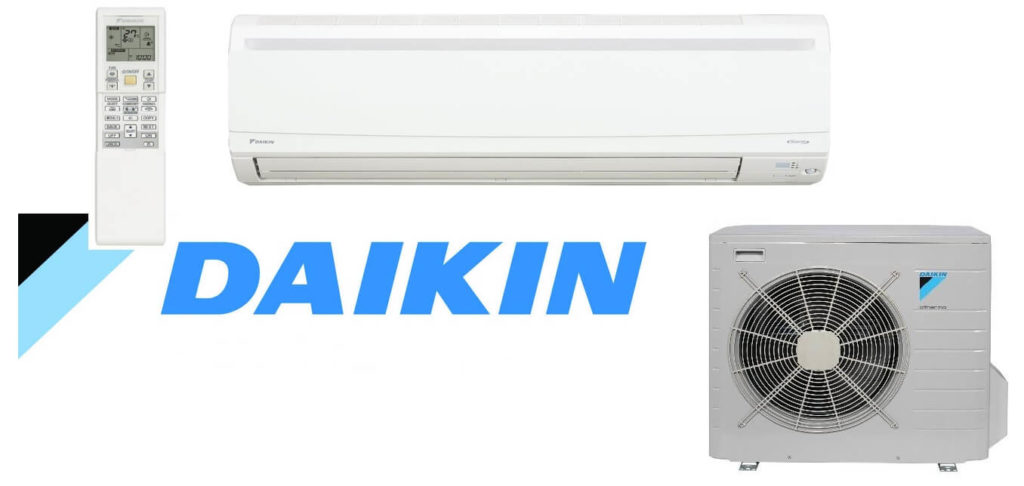
Most people have heard of ductless cooling and heating systems, and they have probably seen the small, indoor devices installed high on walls in homes, restaurants or office buildings. But what do you really know about these systems?
1. They Offer Highly Flexible Solutions
Whereas traditional heat pumps and central air conditioning systems force cooled and heated air through ducts, ductless systems deliver air directly into different zones. They are comprised of a small outdoor unit and one or more indoor units that require nothing more than mounting capabilities and access to electricity.
Sometimes referred to as split systems, multi-split systems, or split-ductless systems, ductless cooling and heating offers home and business owners a cost-effective way to replace inefficient window units, space heaters and electric baseboard heaters. They can be installed in home additions, new construction, condominiums and apartments, or to improve temperature control in specific rooms. Ductless systems can even be fit for buildings that currently use ducted forced-air systems.
2. They Save You Money
One of the biggest reasons why homeowners switch to ductless cooling and heating is overall cost savings. In recent years, utility costs across the country have skyrocketed. When a home’s temperature depends upon an inefficient system, monthly bills can quickly climb out of control. Ductless systems operate on less power – they are smaller than traditional forced-air systems, and because the temperature-controlled air is delivered directly into a room, there is no loss in efficiency. Multi-split systems also allow homeowners to create “zones” in their home, which means they no longer have to cool or heat rooms that aren’t occupied.
In addition to saving money on utilities, homeowners may also be eligible for tax credits or utility rebates for the year they install a ductless system. There are many programs at the federal, state and local level that allow homeowners and businesses to take advantage of these additional savings.
3. They Improve Indoor Air Quality – Happy Breathing!
Often, the quality of indoor air can be lower than the quality of outdoor air. With traditional HVAC systems, air ducts must be professionally cleaned on a regular basis, and even after cleaning, dust and allergens are left behind. Ductless systems, on the other hand, offer multi-stage filtration that can drastically reduce dust, bacteria, pollen, allergens and other particulates in the air.
4. They Are Quick and Easy to Install
Installing a traditional, ducted system can take several weeks and disrupts daily activities in the home. Ductless systems are far less invasive to install and depending upon the number of indoor and outdoor units required, can be up and running in as little as one day.
Multi-split systems run on small pipes that require a mere three-inch hole. That means homeowners don’t have to worry about rebuilding walls or ceilings around ductwork and there is no loss of precious square footage.
5. Ductless Cooling Lowers Your Carbon Footprint
The small size of a ductless cooling system and its zoning capabilities allows for greater energy efficiency. Ductless cooling and heating systems follow ENERGY STAR guidelines, which means they are far more energy efficient than the minimum standards set forth by the U.S. federal government. Improved efficiency saves money, of course, but it also helps reduce your total carbon output.
Additionally, ductless systems take advantage of advances in chemistry to reduce effects on the environment. Ductless systems use a refrigerant called R410A, which is known for its zero-ozone depletion potential. This means the system will have less impact on the environment throughout its lifecycle.
Ductless cooling and heating systems are energy efficient, environmentally friendly and completely customizable. They offer homeowners the ability to cool and heat specific zones of their home to the exact temperature they desire, providing consistent and exceptional year-round comfort.
Call NexGen Today
Our expertise and commitment to customer satisfaction make us the leading HVAC company in Southern California. To learn more about our equipment, services, and protection plan,
book an appointment online or call
888-277-0415.
Ductless Mini-Split Myths Busted
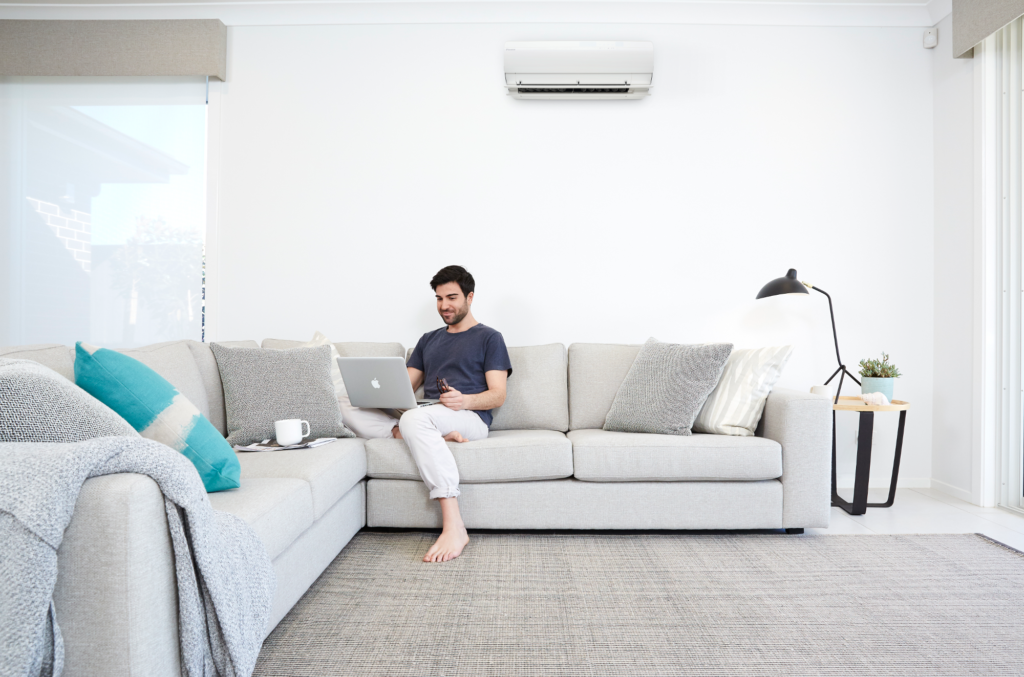
Myth 1: Ductless Air Conditioning Units Are Only for New Construction
There is a lot of confusion out there about which homes are ideal for ductless air conditioning. You may believe that you can only put these units into new construction. While mini-split ductless air conditioning units are great for well-insulated, newly built homes, they can also be used in existing houses. These units are easy to install and require very little space, making them an excellent choice for homeowners who wish to upgrade or add a brand new cooling system without installing duct work.
This is great for homeowners who have built a room addition that does not have duct work or whose home does not have centralized air at all. If you own an especially old home or you live in specific parts of the country, there may be no centralized cooling in the house at all. Retrofitting your house with a whole-home air conditioning system can be difficult in older homes and can also be costly. If you want more control over the climate in individual rooms in your home, smaller units can help. You can make your home — no matter when it was built — a more comfortable place to live with a mini-split air conditioning unit.
Myth 2: Ductless Air Conditioning Units Provide Uneven Cooling
If you are looking at a ductless air conditioning system, you might have heard they provide uneven cooling in your room or home. This may be true for window units, but it is not so for mini-split ductless air conditioning units. They may work differently than a traditional system but they still distribute air evenly throughout your home.
When you install a window air conditioning you may notice a large discrepancy between the temperature near the unit and several feet away. This is not the case with a ductless system. You should be able to enjoy the same level of comfort throughout your home when you opt to install one of these units.
Myth 3: Mini-Split Air Conditioning Units Are Bad for Air Quality
Another example of ductless air conditioner myths is the belief that these types of units are bad for the air quality inside your home. Many people believe that ductless air conditioning units collect and circulate bacteria or spread dust into your room or home. This myth is particularly harmful because these units actually contain filters and other self-cleaning functions to purify the air.
The filters collect and trap dust, dirt, spores and anything carrying bacteria and other contaminants. Some mini-split air conditioning units even clean the air better than traditional ducted systems or window units. With a traditional system, cleaning contaminants out of the duct work can be complicated and expensive. You can easily clean your mini-split unit’s filter with soap and water.
Myth 4: Ductless Units Eliminate Energy Losses
There is a myth that the absence of duct work in a mini-split unit eliminates energy loss. When you consider installing a ductless air conditioning unit, you should know that while there are no duct losses, other types of energy loss may occur. However, these losses are usually significantly less than the duct losses in a traditional system. This makes mini-split units an energy efficient alternative to installing or upgrading a whole-home cooling system.
If your older unit is broken or inefficient, or if your home has no air conditioning at all, it can be cost effective to install a mini-split air conditioning unit instead of a traditional system. The smaller, newer unit will usually be more efficient than ones that are older or original to the home. This can equal monthly savings on your energy bills.
Myth 5: Installation Costs of Ductless Units Are Significantly Less
One of the more prevalent ductless air conditioner myths is that installing mini-split ductless air conditioning units is cheaper overall than updating or installing a traditional whole-home air conditioning system. While this may be true if you live in a smaller home or only wish to add air conditioning to a room addition or a modified part of the home that has no duct work, if you have a larger home, you may not be saving as much as you think, if any at all. If your home 2,000 square feet, you may find that it costs more to install multiple mini-split units than it would to replace your ducted air conditioning system. Before you decided on the air conditioning system for you, you must assess the needs of your home in particular.
No matter if you choose to replace your traditional heating and cooling system or you decide to install mini-split air conditioning units throughout your home, it is important to be well-informed first. Doing your research and asking questions will make you more comfortable with whatever purchase you make.
Call NexGen Today
Our expertise and commitment to customer satisfaction make us the leading HVAC company in Southern California. To learn more about our equipment, services, and protection plan,
book an appointment online or call
888-277-0415.













